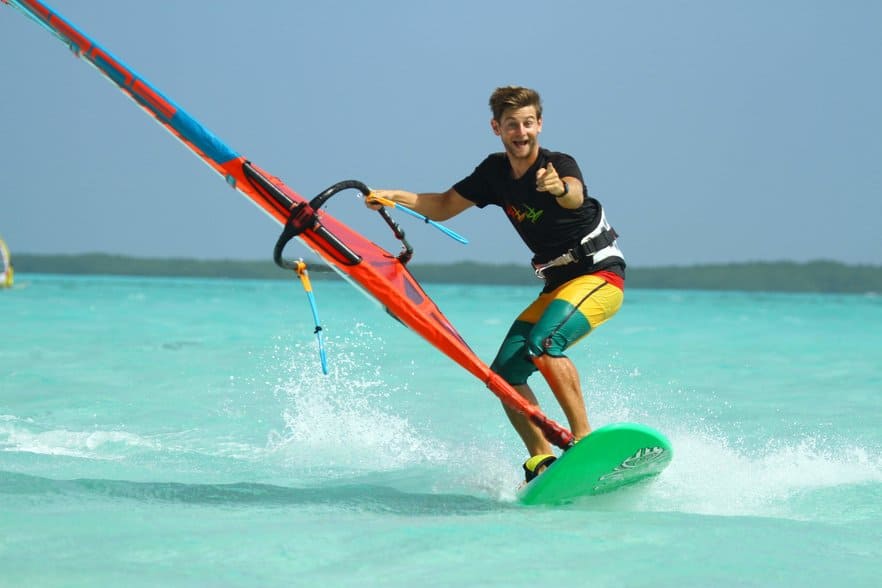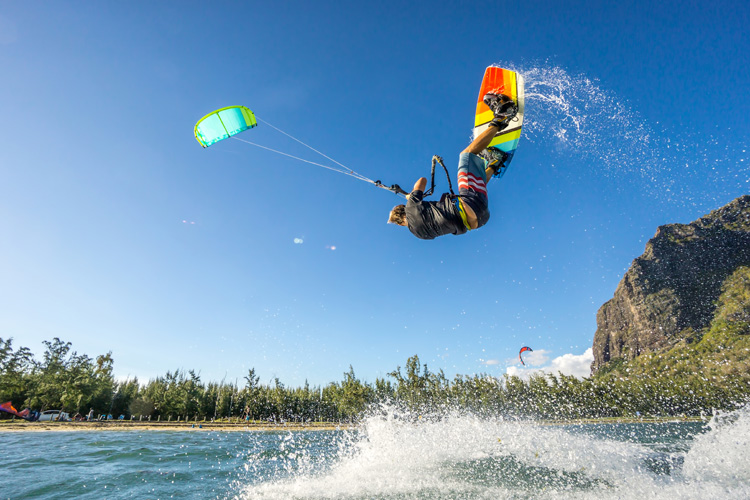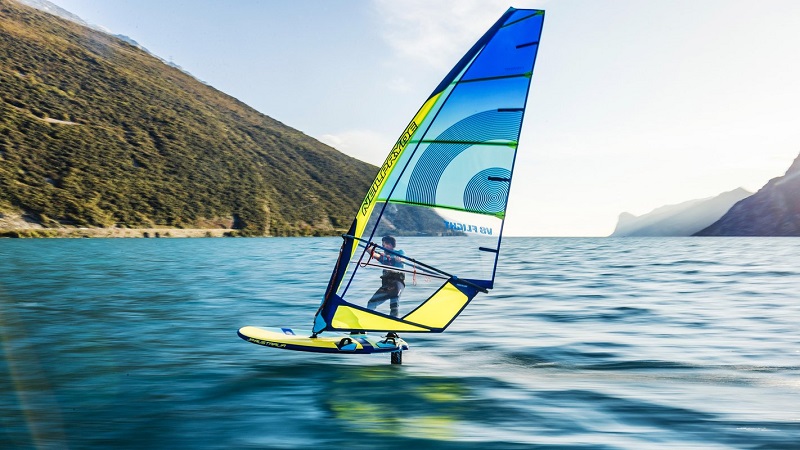How to learn windsurfing? Windsurfing for beginners

We are going to teach you how to learn windsurfing easily and safely. You will only put in some patience and a little perseverance. Everyone thinks about the difficulty of this sport. This statement tends to create confusion. Windsurfing was not a demanding sport in the beginning. It sure was in the 80s and 90s, but today with the amount of material available for initiation, it is strange that it is not possible to do a few laps soon.
If you can get a friend to lend you aboard with volume and wide, as well as a small rig, any sail no larger than 3.5 meters will do, you can have the first contact without many complications, provided there is little wind. Therein lies the crux of the matter, “moving,” moving is not the same as gliding, jibe, jumping, etc. Therefore, to enjoy windsurfing, you will have to work hard, many falls, muscle aches, catapults, material breaks, moments of stress in the sea, until the days come when things start to turn out naturally, quickly and without thinking about the movements. That is the reason why we affirm that it is the most difficult to master. It is very technical.
Windsurfing for beginners?
It’s all technical, not brute force. Another question about learning is physical fitness. Everyone complains of pain in the lower back, forearms, shoulders, all over the body. That is, we use a lot of force to navigate. Here we will repeat that windsurfing is a very technical sport, so technical that you can see children lift the sail from the water with one hand, and an adult hardly lifts it a fourth. Windsurfing is all technical and muscular ergonomics. It is a continuous game with the weight of your body to do all the movements.
Take these Starter material (board and rigging)
It will be worth a wide board to have the best possible balance and a generous thickness for buoyancy. These types of boards are nicknamed “boats,” but to learn that boats come to us, we will also use them to ride the family or as paddles thanks to their size.
Rigging (sail, mast and boom) materials are necessary
Regarding the rigging (sail, mast and boom), the smaller the first days the better, the less weight to make the movements and, consequently, less effort and falls. Those falls are what will cause us to exhaust ourselves before. Of course, do not expect to pick up speed with that rig, for that there will be time. It will come in handy when we get level and want to get into the real wind.
Regarding the conditions, you have to look for beaches without waves, no undulations lakes or swamps are recommended to learn. Regarding the wind, we recommend places with constant winds and few gusts to avoid back jerks, since at first, you will surely pull more arms than counteracting the force of the sail with your weight, which is as it should be.
Regarding the weather conditions, you have to look for beaches without waves, no undulations lakes or swamps are recommended to learn. Regarding the wind, we recommend places with constant and little gusty winds to avoid back jerks, since at the beginning, you will surely pull more arms than counteract the force of the sail with your weight, which is as it should be.
Summarizing
To learn, the ideal is to take a course where you can at least stay with the technique of the most basic movements. You can try to learn from a charitable friend who is willing to put up with us, but it will never be the same as a course. There are also cases of self-taught people, first reading the windsurfing bible, reviewing all the existing videos on YouTube. For us, this type of person deserves all our admiration. They will achieve it thanks to their perseverance.




